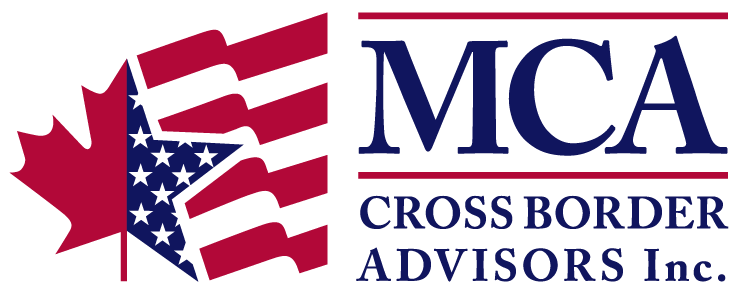A Potential Investment Transfer Strategy Considering the New Proposed Capital Gains Inclusion Rate
The recently announced 2024 Canadian federal budget has proposed an increase to the capital gains inclusion rate. Effective June 25, 2024, the inclusion rate for capital gains will increase from 50 per cent to 662/3 per cent. For individuals, the inclusion rate will remain at 50 per cent for the first $250,000 of realized annual capital gains, while there is no such exemption for corporations.
For example, for a resident of British Columbia taxed at the top marginal tax bracket, the combined federal and provincial tax on capital gains is currently 26.75 per cent based on the 50 per cent inclusion rate of the top marginal bracket of 53.50 per cent. However, the tax rate for capital gains realized after June 24 will increase by around 9 per cent to 35.67 per cent after the first $250,000 of realized gains.
Since the $250,000 threshold only applies to individuals and not to corporations, the use of holding companies to own investments becomes less attractive post-June 24, 2024.
Considering this upcoming change, the question then becomes whether now is the time to transfer one’s investments out of a holding company to the individual’s hands.
The answer to this question is yes: this brief window of time before June 25th may be an opportune time to act. To see why, let’s look at two examples below.
Example 1: John Doe is a BC resident and is taxed at the top marginal tax rate of 53.50 per cent. John Doe personally owns an investment portfolio with a fair market value (“FMV”) of $1,000,000 and an adjusted cost base (“ACB”) of $100,000.
Assuming John does not have any other capital gains realized in the same year, when he sells the portfolio post-June 24, 2024, he will realize a capital gain of $900,000, with the first $250,000 taxed at the 50 per cent inclusion rate and the remaining $650,000 taxed at the 662/3 per cent inclusion rate. The total capital gains tax owing will be $298,708, for an effective tax rate of 33.19 per cent.
Example 2: Let’s assume John Doe owns the same investment portfolio corporately within his holding company (“Holdco”), incorporated in BC and taxed as a BC resident company, which has a combined federal and provincial investment income rate of 50.70 per cent. Under the new legislation, Holdco will face a higher tax liability on realized capital gains post-June 24, 2024. When the portfolio is sold, Holdco will realize a capital gain of $900,000 all taxed at the 662/3 per cent inclusion rate. The total capital gains tax owing will be $304,200 for a BC corporation, with an effective tax rate of 33.80 per cent.
In this second example, John Doe will face two layers of income tax, the first at the corporate level, and the second at the personal level when the after-tax corporate funds are distributed to him as a dividend.
It is currently unclear how the proposed capital gain tax rate will impact the Canadian tax concept of integration, which ensures that the combined corporate and personal tax burden on corporations and their shareholders is roughly equivalent to the tax burden that would have been paid if the corporation’s income was instead earned personally by the shareholders. However, based on the current corporate refundable tax system, the ultimate combined BC personal and corporate tax rate would likely be 39.37 per cent once the after-tax funds are distributed to the individual as dividends.
As we can see from the examples above, once integration is considered, due to the $250,000 exemption threshold not applying for corporations, there is a significant disadvantage for Holdco to hold the investment portfolio as of June 25, 2024.
In fact, the tax difference from the two examples above could be even greater (with a bigger advantage of personal ownership) if John Doe were to spread the realized capital gains from the portfolio sale in Example 1 over several years. If he staggered the sale over 4 years to ensure that the annual capital gains realized from the investment sale always remained under $250,000 annually, all of his personal capital gains would then be taxed at the 26.75 per cent rate, which amounts to nearly a 13 percent savings over Example 2.
There are still a few weeks remaining for shareholders of companies that have portfolio investments to transfer the assets out of their company to be owned personally instead. However, investors need to be aware that the transfer of assets from a corporation to personal hands will be considered a taxable transaction (i.e. a transfer at FMV, not at ACB). For corporations that have a capital loss carryover from prior years, now may be the time to use the losses on the realized capital gains that would be incurred as a result of the transfer.
The rules around the proposed capital gain inclusion rate are complex, and MCA Cross Border Advisors can help you determine whether you are affected by these proposals and how they may apply to your unique situation. For more details on how these new rules relate to your plan to exit Canada, please contact us.

MCA Cross Border Advisors, Inc. is a registered investment adviser. Information presented is for educational purposes only and does not intend to make an offer or solicitation for the sale or purchase of any specific securities, investments, or investment strategies. The content of this presentation is for information purposes only and should not be construed as investment or financial advice. Investments involve risk and, unless otherwise stated, are not guaranteed. Be sure to first consult with a qualified financial adviser and/or tax professional before implementing any strategy discussed herein. Past performance is not indicative of future performance.
